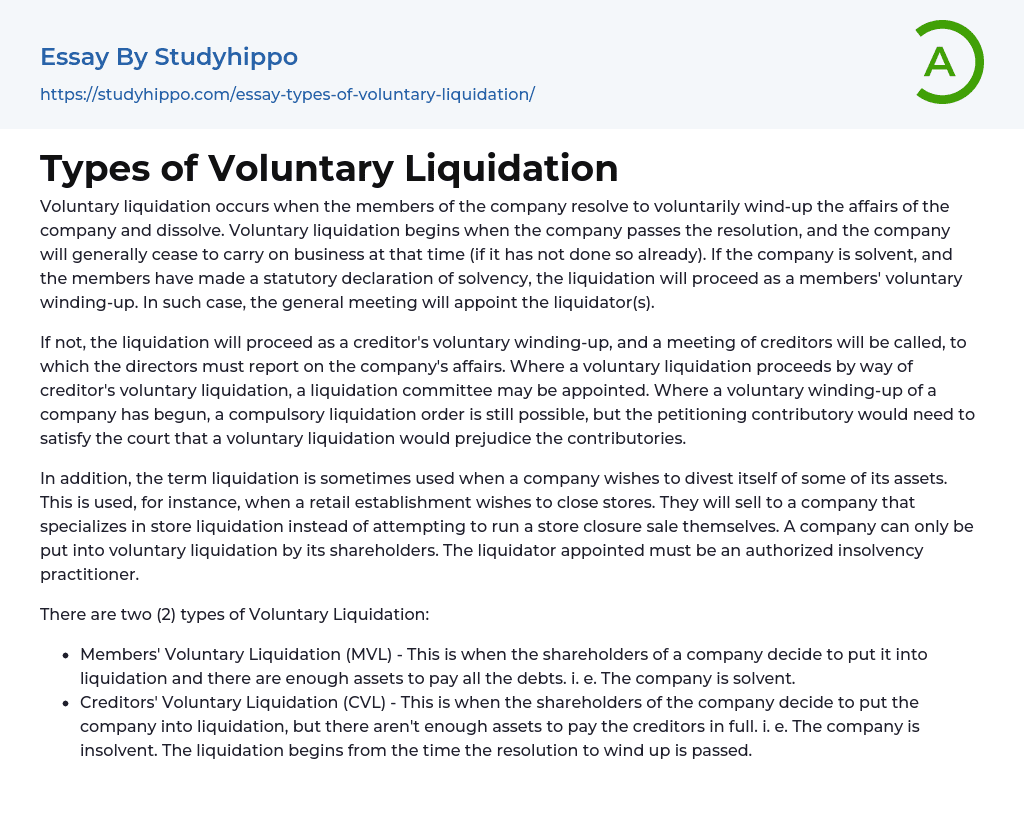Voluntary liquidation refers to the voluntary process of winding up and dissolving a company.
When a company decides to voluntarily liquidate, it begins by passing a resolution and typically ceases business operations at that time (unless it has already done so). If the company is financially stable and its members have declared solvency according to the law, the liquidation will proceed as a members' voluntary winding-up. In these situations, liquidator(s) are appointed during a general meeting. However, if the company is not financially stable or its members have not declared solvency, the liquidation will move forward as a creditor's voluntary winding-up. This requires a creditors' meeting where directors must provide a report on the company's affairs.
When a voluntary liquidation is conducted through a creditor's voluntary liquidation, it may involve the appointment of a liquidation committee. However, if a company has already initiated the process of voluntarily winding-
...up, they can still request a compulsory liquidation order from the court. In such cases, the petitioner must provide evidence to demonstrate that conducting a voluntary liquidation would harm the contributories.
Furthermore, "liquidation" can also refer to situations where companies decide to sell specific assets. This commonly occurs when retail establishments plan on closing their stores. Instead of organizing their own store closure sale, these businesses choose to sell their assets to specialized companies that focus on store liquidation.
For a company to undergo voluntary liquidation, the shareholders must make the decision. Additionally, an authorized insolvency practitioner must be appointed as the liquidator.
- In Members' Voluntary Liquidation (MVL), the company is chosen by its shareholders for liquidation and has sufficient assets to settle all debts, indicating financial stability.
- Creditors' Voluntary Liquidation (CVL) occurs
when shareholders opt for company liquidation but lack enough assets to fully repay creditors, resulting in insolvency. The process of liquidation begins after passing the resolution to wind up.
- Commercial Bank essays
- Debit Card essays
- Deposit Account essays
- Subprime Lending essays
- Accounting essays
- Marketing essays
- Automation essays
- Business Cycle essays
- Business Model essays
- Business Operations essays
- Business Software essays
- Corporate Social Responsibility essays
- Infrastructure essays
- Logistics essays
- Manufacturing essays
- Multinational Corporation essays
- Richard Branson essays
- Small Business essays
- Cooperative essays
- Family Business essays
- Human Resource Management essays
- Sales essays
- Market essays
- Online Shopping essays
- Selling essays
- Strategy essays
- Management essays
- Franchising essays
- Quality Assurance essays
- Business Intelligence essays
- Corporation essays
- Stock essays
- Shopping Mall essays
- Harvard Business School essays
- Harvard university essays
- Trade Union essays
- Cooperation essays
- News Media essays
- Waste essays
- Andrew Carnegie essays
- Inventory essays
- Customer Relationship Management essays
- Structure essays
- Starting a Business essays
- Accounts Receivable essays
- Auditor's Report essays
- Balance Sheet essays
- Costs essays
- Financial Audit essays
- International Financial Reporting Standards essays




